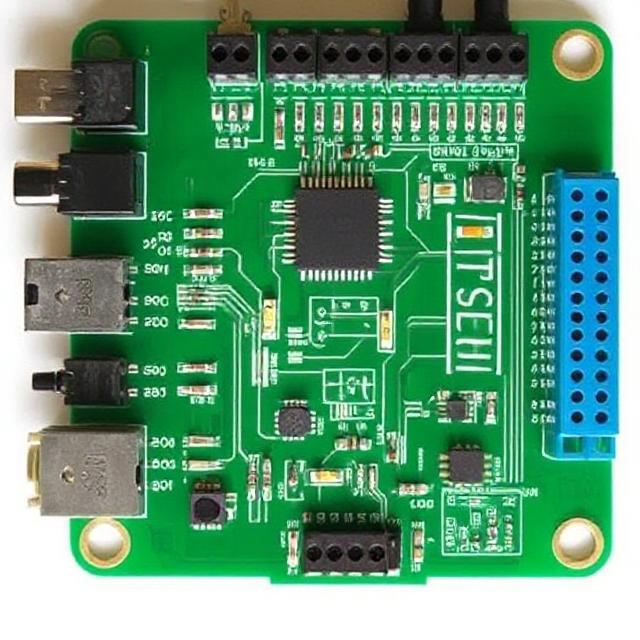As electrical systems grow more complex and interconnected—especially with the integration of renewable energy, electric vehicles, and smart devices—power quality has become a critical concern. Poor power quality can damage equipment, reduce efficiency, and even lead to costly outages. One of the most common causes of poor power quality is harmonics.

This article explores what power quality means, the role of harmonics, their causes and effects, and how power electronics can be used to mitigate these issues.
What is Power Quality?
Power quality refers to the degree to which the voltage, frequency, and waveform of the electrical power supply conform to ideal standards. High power quality means the power supply is stable, free of distortions, and within the required limits.
Key aspects of power quality include:
-
Voltage stability: Constant voltage level without sags or surges.
-
Frequency stability: Typically 50 Hz or 60 Hz depending on the region.
-
Waveform purity: A clean sinusoidal waveform with minimal distortion.
Common Power Quality Issues
-
Voltage Sags and Swells – Temporary drops or rises in voltage.
-
Voltage Fluctuations – Frequent small variations in voltage.
-
Transients – Sudden spikes or dips, often caused by lightning or switching.
-
Flicker – Visible light dimming or fluttering due to voltage changes.
-
Harmonics – Distortion of the voltage or current waveform.
Among these, harmonics are one of the most persistent and damaging problems in modern power systems.
What Are Harmonics?
Harmonics are voltage or current waveforms that are integer multiples of the fundamental frequency of the power system (usually 50 or 60 Hz). Instead of a perfect sine wave, harmonics distort the waveform into a more complex shape.
Example:
If the fundamental frequency is 50 Hz:
-
2nd harmonic = 100 Hz
-
3rd harmonic = 150 Hz
-
5th harmonic = 250 Hz
…and so on.
These distorted waveforms can significantly impact the operation of electrical equipment.
Sources of Harmonics
Harmonics are mainly generated by non-linear loads, which draw current in abrupt pulses rather than smooth sine waves. Common sources include:
-
Switching Power Supplies
-
Variable Frequency Drives (VFDs)
-
LED Lighting and Electronic Ballasts
-
Computers and Office Equipment
-
Uninterruptible Power Supplies (UPS)
-
Electric vehicle chargers and solar inverters
Effects of Harmonics
Harmonics can lead to several serious issues in an energy system:
1. Equipment Overheating
Motors, transformers, and capacitors may overheat due to distorted current waveforms, leading to reduced lifespan.
2. Increased Losses
Excessive harmonic currents increase I²R losses in conductors and devices, reducing system efficiency.
3. Malfunction of Sensitive Equipment
Electronic controls and communication systems may behave erratically in the presence of harmonic distortion.
4. False Tripping of Circuit Breakers
Harmonics can confuse protective relays and cause unnecessary shutdowns.
5. Resonance
Interaction between system inductance and capacitance at harmonic frequencies can cause dangerous voltage amplification.
Measurement of Harmonics
Harmonic distortion is measured using:
-
Total Harmonic Distortion (THD): The most common metric.
-
THD < 5% is generally acceptable for power systems.
-
Power analyzers and harmonics meters are used for measurement.
-
Solutions to Harmonics Problems
1. Passive Filters
-
Use combinations of inductors and capacitors tuned to specific harmonic frequencies.
-
Simple and cost-effective, but bulky and not adaptable to changing loads.
2. Active Power Filters (APFs)
-
Use power electronic converters to inject counter-harmonics into the system.
-
More flexible and efficient, especially for dynamic loads.
3. Multi-Pulse Converters
-
Use transformers to phase-shift currents and cancel certain harmonics.
-
Typically used in large industrial drives.
4. Isolation Transformers
-
Help isolate harmonic-producing loads from sensitive equipment.
5. Power Factor Correction (PFC) Devices
-
Some PFC devices also reduce harmonics while improving power factor.
Role of Power Electronics
Power electronics plays a dual role in power quality management:
-
Source of Harmonics: Devices like VFDs, SMPS, and inverters can introduce harmonics.
-
Solution to Harmonics: Power electronics are used in filters, converters, and controllers to reduce or eliminate harmonics.
Smart inverters and grid-tied systems now often include harmonic compensation features, making power electronics a critical tool in maintaining power quality.
Conclusion
Power quality is essential for the reliable and efficient operation of electrical systems, and harmonics are one of its biggest threats. As the use of electronic and renewable energy devices grows, so does the importance of managing harmonics. Power electronics not only create challenges but also provide powerful tools to overcome them. With proper design, monitoring, and correction techniques, we can ensure clean, stable, and efficient power for both industrial and residential systems.











